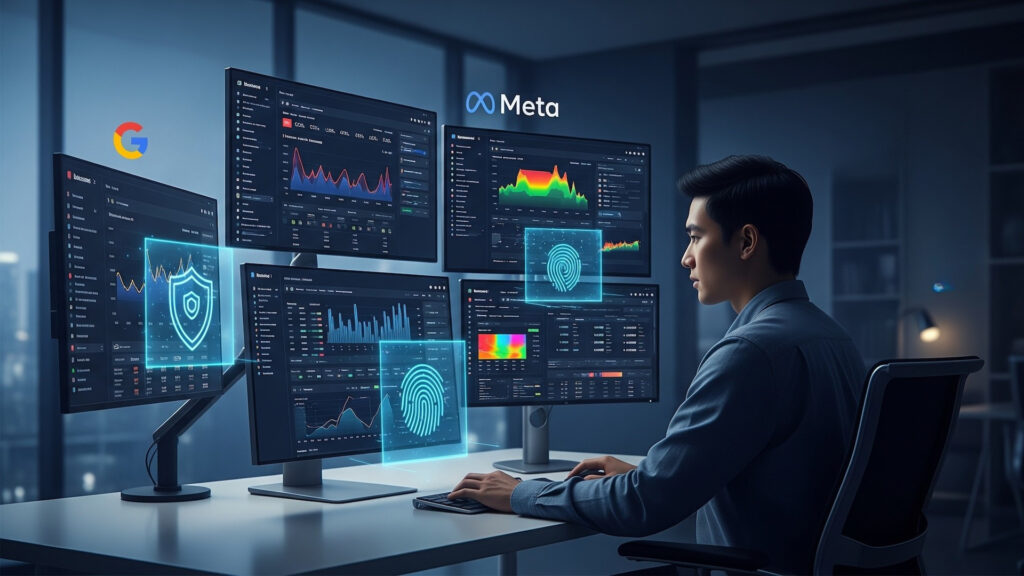
AI is everywhere right now, and its impact on marketing is undeniable. But while the buzz is justified, it’s not the only story shaping PPC in the months ahead.
To get a broader view of what’s ahead for paid search in the second half of 2025, we’re zooming out to spotlight four key trends worth watching, beyond just AI.
Yes, we’ll get to AI. But we’re also covering:
- Platform engagement costs.
- Google’s new (non-AI) feature releases.
- Privacy and regulations.
Let’s set the table for the second half of the year.
1. Engagement costs are (way) up
Taking the average of our client campaigns in 2024 and 2025, Google Search CPCs are up 45%. And that’s the most reasonable of the major channel increases we’re seeing year over year.
On LinkedIn, a representative sample of client data encompassing more than 5 million impressions and 39,000 clicks in the first half of 2024 and 4.7 million impressions and 28,000 clicks in the first half of this year shows year-over-year increases of 209% (CPM) and 147% (CPC).
On Meta (17.6 million impressions and 179,000 clicks in the first half of 2024, 22.6 million impressions and 288,000 clicks in the first half of 2025), we saw year-over-year increases of 106% (CPM) and 64% (CPC).
The stakes of media management are high in 2025.
If you’re not already doing these things, tailor your messaging, audiences, and funnel alignment as much as possible to ensure you’re not misusing your budget.
And triple-check (and uncheck) all settings geared to waste your money, like Google Search Partners or Meta/LinkedIn Audience Extensions.
Dig deeper: PPC budgeting in 2025: When to adjust, scale, and optimize with data
2. Google is actually delivering valuable (non-AI) releases
Now for some good news: Google actually came through in the first half of the year with some useful feature releases.
Even if they’re just window dressing to distract from AI completely changing the rules of the game, we’re finding some benefit in some of the new releases.
Those include:
- A slew of long-requested Performance Max improvements: increased visibility in performance by channel and search terms, device-level targeting.
- Lowered barriers to incrementality testing.
- The new tag gateway, which relies on server-side tracking (I’ve been pushing this for a while) and delivers more accurate measurement and richer customer insights, both critical for improving ROI.
I’d love to see Google continue to deliver useful releases.
Next on my list (if you’re listening, Google) would be more messaging-level data to help advertisers understand what messaging is resonating best and leading to the most conversions.
3. Privacy and regulation pressures are rising, especially for Google
Cookies are still here, as far as Google is concerned. But we don’t yet know what form those will take.
Even though Google has rolled back its plan for an opt-in ecosystem for third-party cookies, change is still coming.
Many of Google’s proposals that haven’t actually taken effect were instigated by privacy legislation in the EU, which will likely continue to influence the global privacy protocol.
It seems likely that the future will include a different cookie ecosystem and more transparent data practices, which is certainly something to monitor over the rest of the year and beyond.
Brands would be wise to prepare for a more privacy-compliant future by:
- Investing in consent management.
- Buttoning up first-party data collection and usage.
- Lowering reliance on third-party data.
This should all sound familiar.
Brands that don’t make these investments risk measurement blind spots and likely regulatory penalties down the road.
Smaller retargeting pools and modeled attribution will continue to impact performance marketing, increasing the need to adopt first-party data strategies.
As for Google, we’ve learned pretty conclusively over the past couple of years that they can manipulate auction costs to make up for lost revenue, so I’m not too worried about any fallout for their shareholders.
Dig deeper: Shifts in data privacy are forcing a return to marketing fundamentals
4. AI Mode and AI Overviews ads
And, since I’ve buried one of the bigger ledes in PPC for long enough, let’s talk about AI and the PPC landscape.
Google’s 1-2 rollout of AI Overview ads and AI Mode, which will certainly be monetized with ad inventory, represents another huge step away from more traditional paid search and into a new AI search world.
It is difficult to say so early what this means for user behavior, performance tracking (early signs = not great), and general engagement volume.
However, I feel comfortable saying that marketers will be monitoring the new real estate (and associated impacts) very, very closely.
Dig deeper: Google Ads data shows query length shift post-AI Mode
What advertisers can control in H2 2025
If I had to pick an overarching theme for the second half of 2025, it would be to recommend that advertisers control what they can control.
Macroeconomic forces, rising engagement costs, changing search real estate, privacy laws – we can’t influence any of those things, but here’s what we can do:
- Tighten our campaigns to eliminate waste.
- Prepare data and measurement strategies that minimize reliance on cookies.
- Test and adopt every new tool that helps us refine performance.
- Track changes in user behavior and get creative about engaging them in new and productive ways.
- Make sure your organization’s knowledge-sharing practices are ready for prime time.
Good luck to us all!

